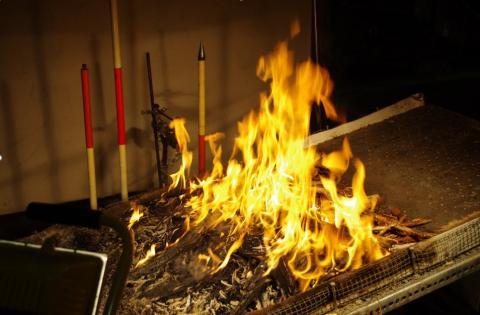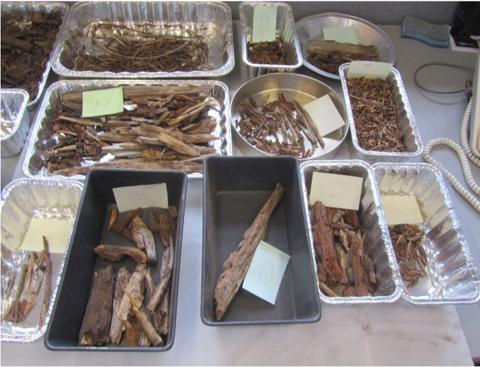Surface fuel characteristics, temporal dynamics, and fire behavior of masticated mixed-conifer fuelbeds of the Rocky Mountains
Mastication is a wildland fuel treatment technique that is rapidly becoming popular with fire managers for fire hazard reduction projects, especially in areas where reducing fuels with prescribed fire is particularly challenging. Mastication is the process of mechanically modifying the live and dead surface and canopy biomass by chopping and shredding vegetation to reduce canopy bulk density, raise canopy base height, lower surface fuelbed depth, and increase surface fuelbed bulk density, thereby reducing fire hazard. However, little is known about the properties of masticated fuelbeds as they age, especially the physical and chemical characteristics of the fuel and how changes in these characteristics change fire behavior, drying characteristics, and smoldering combustion. In 2013, we began a comprehensive JFSP-funded study called MASTIDON (MASTIcated fuelbed Decomposition Operational Network) to measure the diverse characteristics of masticated fuelbeds at 15 treatment sites of different ages across the western U.S. Rocky Mountains. Our primary objective was to evaluate effects of aging of masticated fuelbeds on fire behavior, fuel moisture dynamics, soil heating, and smoldering combustion. The study consisted of five separate efforts (phases) that were integrated to produce a complex set of diverse deliverables. The Fuels Phase involved measuring a complex suite of fuelbed and particle physical and chemical characteristics to describe changes in masticated fuelbeds as they decomposed over time. In the Fire Phase, we created masticated fuelbeds and burned them in the burn chamber and measured a suite of fire behavior related variables that we then related to fuelbed age since treatment. In the Smoldering Phase, we created small fuelbeds that were ignited and the amount of heat pulsed through the soil via smoldering was recorded. And in the Drying Phase, we saturated three replicates of fuelbeds collected from the 15 sites with water and then measured their wet weight as they dried to develop drying curves for masticated fuelbeds and we then related the drying curve statistics to fuelbed age. And in the last Fuel Modeling phase, we evaluated the fire behavior and smoldering combustion results to determine if new fire behavior fuel models are needed. Each phase is summarized in this report and a synopsis of methods, results, and discussion is presented. We found little change in the physical and chemical characteristics of masticated fuel over the 10 years represented in this study, and this contributed to the fact that we found little change in fire behavior, drying rates, and smoldering combustion with masticated fuelbed age.

